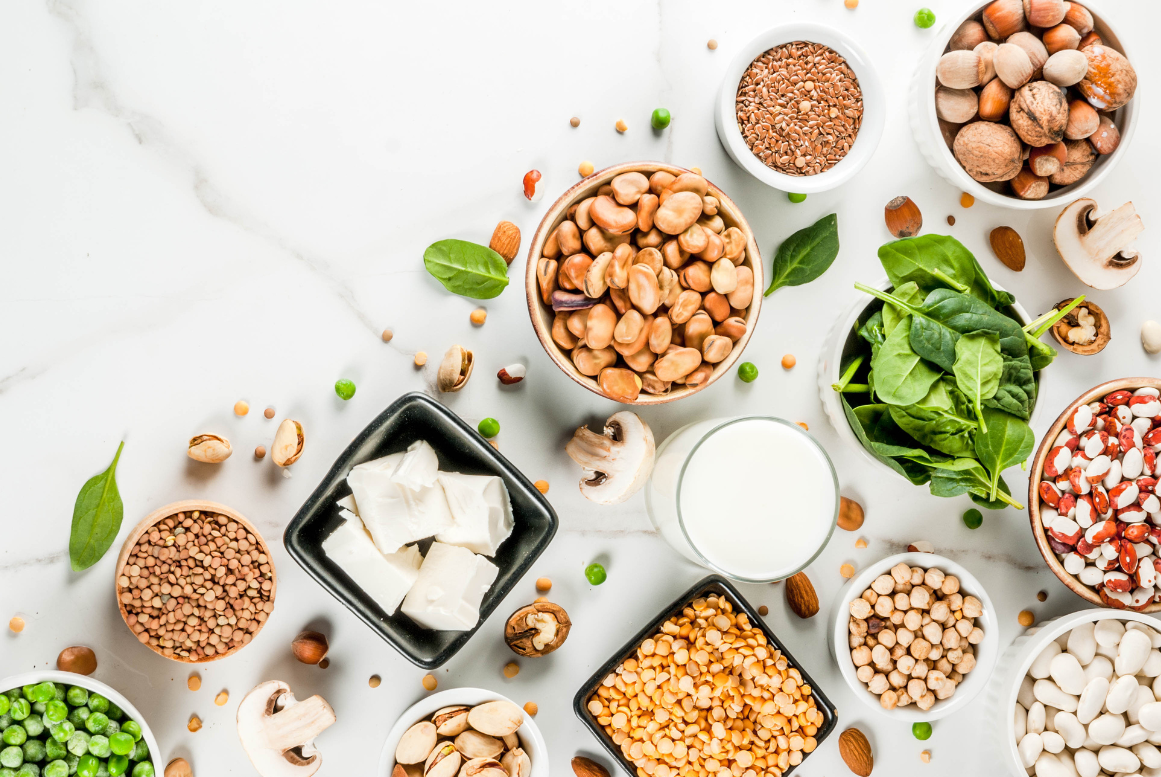How to Supplement Protein Deficiencies and What to Focus On?
With the growing popularity of vegan and vegetarian diets, interest in healthy and balanced eating without animal products is also on the rise. One of the most frequently discussed aspects of this type of diet is the issue of protein, which is a key macronutrient in the human diet. Protein plays many essential roles, such as building and repairing tissues, supporting the immune system, and synthesizing enzymes and hormones.
Discover how those following vegan and vegetarian diets can effectively replenish their protein, what key factors to focus on, and which foods and combinations offer complete proteins.
The role of protein in the body and the needs of individuals on a plant-based diet.
Protein is made up of amino acids that are essential for the proper functioning of the body. Out of 20 amino acids, nine are classified as essential because the body cannot synthesize them on its own, and they must be obtained from food. A diet rich in protein is crucial for maintaining muscle mass, tissue repair, and supporting the immune system.
In the case of plant-based diets, one of the main challenges is providing an adequate amount of all essential amino acids. Plant proteins, unlike animal proteins, often do not contain the full spectrum of amino acids in the appropriate proportions, which requires a more thoughtful approach to diet planning.
Sources of protein in a plant-based diet.
The main sources of protein in a vegan and vegetarian diet include:
- Legumes: Chickpeas, lentils, beans, and peas are fundamental sources of protein in a plant-based diet. In addition to protein, they also provide fiber, B vitamins, and minerals such as iron and magnesium.
- Soy products: Tofu, tempeh, soy milk, and other soy-based products are rich in protein and often serve as meat substitutes in a plant-based diet. Soy is one of the few plant sources that provides a complete set of amino acids
- Nuts and seeds: Almonds, cashews, chia seeds, flaxseeds, and sunflower seeds are excellent sources of protein and healthy fats.
- Grains and pseudograins: Quinoa, amaranth, buckwheat, and oats also provide protein, and when combined with other plant products, they can help complement amino acid deficiencies.
Complementary sources of protein and the importance of their combination.
In plant-based diets, it is essential to combine different sources of protein to ensure the body receives all necessary amino acids in the appropriate proportions. Complementary proteins are those that mutually enhance each other’s amino acid content. Examples of such combinations include pairing grains with legumes, such as rice with beans, whole grain bread with hummus, or low-GI pasta with tofu.
Pasta with the addition of lupin flour as an innovative source of protein
One of the innovative products available on the market is pasta with the addition of lupin flour. Lupin is a legume with a high protein content, and its use in pasta production allows for a product with a low glycemic index, rich in fiber and protein. Such pasta, combined with other sources of plant protein like tofu or legumes, can constitute a complete meal, providing the body with essential amino acids.
Potential risks of protein deficiencies and how to prevent them.
Protein deficiencies in a plant-based diet can lead to various health issues, such as muscle loss, weakened immune function, tissue regeneration problems, and general fatigue. To prevent these issues, individuals on a vegan and vegetarian diet should:
- Monitor protein intake: Regularly consume a variety of plant-based protein sources, such as legumes, soy products, nuts, and grains.
- Ensure dietary diversity: Combine various products to obtain a complete spectrum of amino acids.
- Consider supplementation: In some cases, such as for athletes or older adults, protein or amino acid supplementation may be advisable.
- Consult with a dietitian: Individuals on a plant-based diet should regularly consult with a dietitian to ensure that their diet is appropriately balanced.
Summary
Protein is an essential component of the diet, and adequate intake is crucial for health, especially in plant-based diets. By consciously combining various sources of plant protein, such as legumes, tofu, nuts, and innovative grain products like pasta made with lupin flour, individuals on a vegan and vegetarian diet can ensure they receive complete protein necessary for the proper functioning of the body. Incorporating such products into the diet, along with maintaining adequate fiber intake and controlling glycemic index, can not only ensure health but also improve the quality of life.








